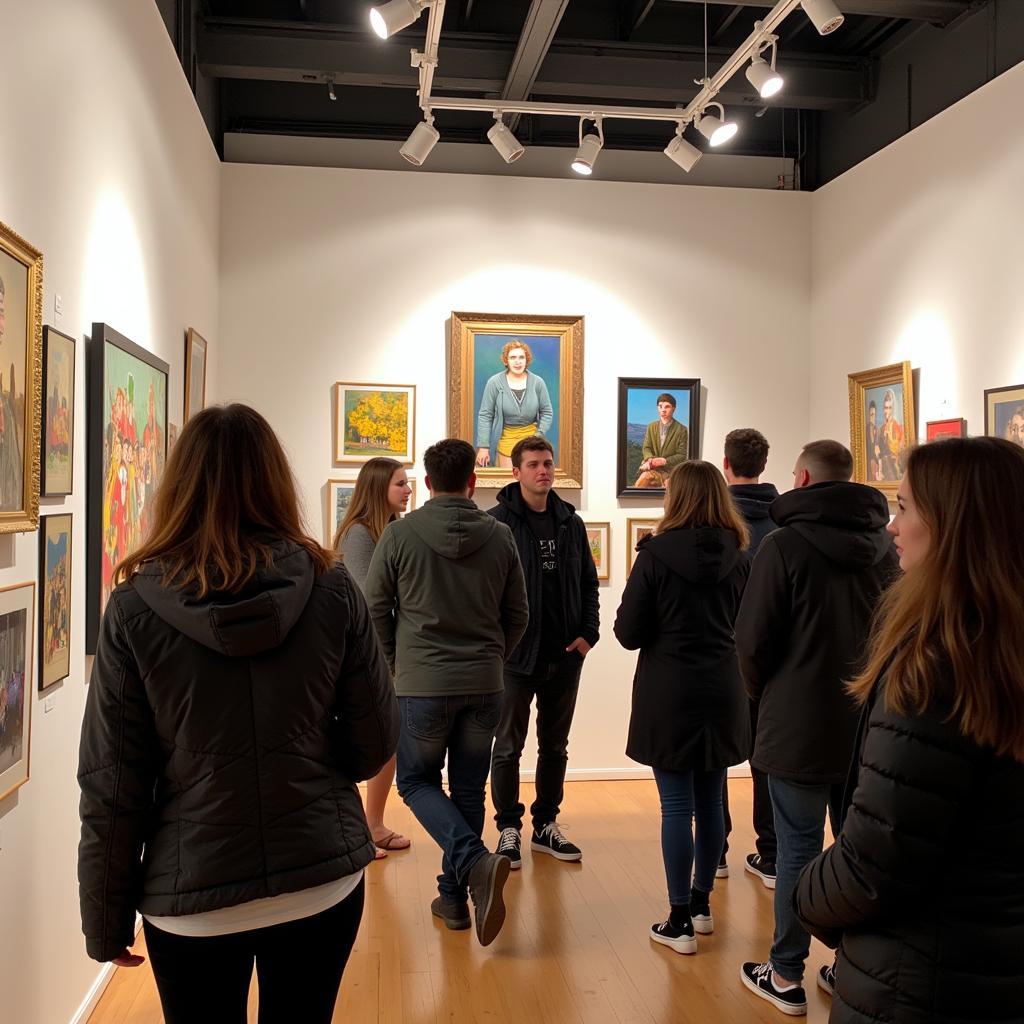The Fine Art of Living and Manifesting a Peaceful Death
The Fine Art Of Living And Manifesting A Peaceful Death is a complex and deeply personal journey. It encompasses not just the final moments of life, but the entirety of our existence, shaping how we perceive and prepare for our inevitable transition. This exploration delves into the multifaceted aspects of living a fulfilling life and cultivating a serene approach to death.
Understanding the Fine Art of Living
Living well is the foundation upon which a peaceful death can be built. It’s about cultivating mindfulness, embracing joy, and fostering meaningful connections. What does this entail? It’s about recognizing the preciousness of each moment and living with intention. This can involve pursuing passions, nurturing relationships, and contributing to something larger than ourselves.
- Mindfulness: Practicing mindfulness allows us to be present in each moment, appreciating the small joys and navigating challenges with greater ease. This presence cultivates a sense of peace that can extend to our perception of death.
- Joy and Gratitude: Focusing on the positive aspects of life and cultivating gratitude for our experiences, both big and small, creates a reservoir of positive energy that can sustain us through difficult times, including the prospect of death.
- Meaningful Connections: Nurturing strong relationships with loved ones provides a sense of belonging and support. These connections offer comfort and solace, both in life and as we approach death.
Manifesting a Peaceful Death: Practical Steps
While death is inevitable, the experience surrounding it can be influenced by our choices and preparations. Manifesting a peaceful death involves addressing practical matters as well as cultivating inner peace.
- Advance Care Planning: Creating a living will and appointing a healthcare proxy ensures our wishes are respected regarding medical treatment. This proactive approach alleviates stress for both ourselves and our loved ones.
- Open Communication: Discussing our end-of-life preferences with family and loved ones fosters understanding and minimizes potential conflict during a vulnerable time. Honest conversations create space for emotional support and shared decision-making.
- Spiritual Exploration: Connecting with our spirituality, whether through religious practices, meditation, or exploring our personal beliefs, can provide comfort and meaning as we contemplate death. This exploration can help us find peace in the face of uncertainty.
Facing Fears and Embracing Acceptance
Death is often accompanied by fear and anxiety. Addressing these emotions directly is crucial for cultivating peace.
- Acknowledge Your Fears: Ignoring our fears only amplifies them. Acknowledging and exploring the root of these fears allows us to process them constructively.
- Seek Support: Talking to therapists, grief counselors, or spiritual advisors can provide valuable guidance and support as we navigate our emotions surrounding death.
- Focus on the Present: Dwelling on the past or worrying about the future can exacerbate anxiety. Focusing on the present moment allows us to appreciate the life we have now.
“Accepting death doesn’t mean giving up on life; it means embracing the full spectrum of human experience,” says Dr. Eleanor Vance, a renowned palliative care specialist.
The Art of Letting Go
Letting go is a significant aspect of achieving a peaceful death. This involves releasing attachments, forgiving ourselves and others, and accepting the natural cycle of life and death.
- Release Attachments: While we cherish our possessions and relationships, recognizing their impermanence can help us detach from them emotionally. This doesn’t mean loving less, but loving with an awareness of the natural flow of life.
- Practice Forgiveness: Holding onto resentment and anger only creates suffering. Forgiving ourselves and others liberates us from these burdens and fosters inner peace.
“Forgiveness is not about condoning actions, but about freeing ourselves from the weight of the past,” adds Dr. Vance.
Conclusion
The fine art of living and manifesting a peaceful death is a lifelong journey of self-discovery and acceptance. By embracing mindfulness, cultivating meaningful connections, and addressing our fears, we can create a life filled with joy and purpose, and approach death with serenity and grace. Begin this journey today.
FAQ
- What is advance care planning? Advance care planning involves documenting your wishes regarding medical treatment and appointing someone to make decisions on your behalf if you become incapacitated.
- How can I overcome my fear of death? Acknowledging your fears, seeking support from therapists or counselors, and focusing on the present moment can help you navigate your anxieties about death.
- What does it mean to “let go”? Letting go involves releasing attachments to material possessions and relationships, forgiving yourself and others, and accepting the natural cycle of life and death.
- How can spirituality help me prepare for death? Connecting with your spirituality can provide comfort, meaning, and a sense of peace as you contemplate death.
- What is the importance of open communication about death? Discussing your end-of-life preferences with loved ones fosters understanding, minimizes potential conflict, and allows for shared decision-making.
- How can I live a more fulfilling life? Cultivating mindfulness, embracing joy and gratitude, and fostering meaningful connections can contribute to a more fulfilling life.
- What are some practical steps I can take to prepare for death? Creating a living will, appointing a healthcare proxy, and discussing your wishes with loved ones are practical steps you can take to prepare for death.
For further assistance, please contact us at Phone Number: 02462573573, Email: danteum@gmail.com or visit our address: Savico Megamall, 7-9 Đ. Nguyễn Văn Linh, Gia Thụy, Long Biên, Hà Nội 10000, Việt Nam. We have a 24/7 customer support team.

